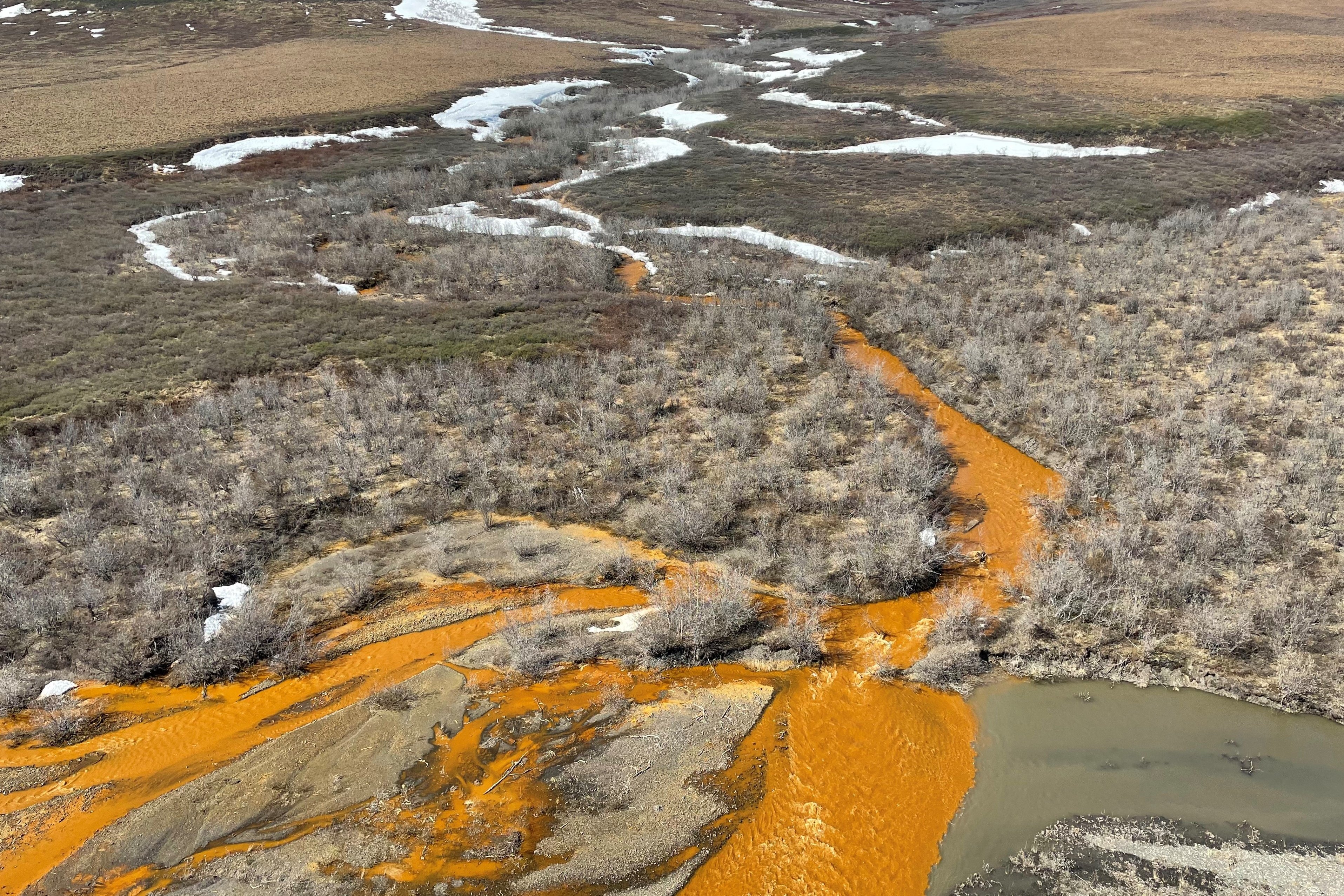Pretty misleading title.
It is known why the rivers are running orange. It is because the permafrost is thawing.
Sure, the exact, specific process causing the oxidation is being debated by scientists, but … the reason is because the permafrost is thawing.
Anyway, what this nearly certainly means is that the artic has already blown past the feared warming tipping point and is now releasing methane, which is a much more potent greenhouse gas than CO2.
This article should be focusing on how this likely indicates that climate change will intensify faster than commonly understood by the general public.
But instead it diverts from this.
Hehehehe
Sure, the exact, specific process causing the oxidation is being debated by scientists, but …
Which makes the title accurate? I didn’t find it misleading at all.
It’s more like the article is focusing on the wrong part of this story. The exact mechanism can be debated but we know what’s happening and why: global warming. The article just doesn’t want to acknowledge that so it focuses on the fact that science hasn’t conclusively figured out the mechanism.
It’s not focusing on what you want it to focus on. But that doesn’t make it the wrong thing.
It would be like saying “the glass feel of the table, but we don’t know why it hit the ground” just because we do not understand gravity in every way possible.
I don’t like your analogy. We understand the physics of falling pretty well. We do not understand the chemistry of this reaction.
Maybe “the glass fell because of humans”. Did they push it off a table? Drop it? Place it inn the counter wrong?
Edit: let me put it this way - the water could turn orange without a melting permafrost right? So while the change in this instance may be triggered by melting permafrost it is not a necessary condition. The cause is something more necessary.
What makes your think that we do not understand the chemistry here?
Where do we start the “x is caused by y”? The way it actually happened? Then melting permafrost is indeed the first step. If you want to go by how we ended up perceiving it, then you need to start, for example, at how the brown color came to be. Then where that came from. Then what caused it to be made. Etc.
There’s definitely a long chain of events that led to these rivers turning orange.
It would be unsatisfying to say “the universe coming into existence caused it”. You need to pick a level to stop at. You’re satisfied with “melting permafrost causes water to turn orange” but I think it’s very reasonable to step a level down. The title is accurate in that regard. The people complaining seem to want the article to be more political.
BTW this discussion reminds me of when Feynman was asked about magnetism.
It’s a geochemistry issue.
In mine closure, artic mines will protect their tailings and waste rock using thermal covers that insulate them from heat, and allow permafrost to form, thus entombing the PAG (Potentially acid generating material - acid drainage presents orange like this too). The frost prevent oxygen (and dissolved oxygen - from water) from interacting with the material, and causing the acid-generating reaction.
With the thawing of natural permafrost, iron that was frozen (as water soluble reduced iron) is released and then oxidized, causing the orange water.
So it’s rust.
Rust, or rusty water with battery acid pH
Battery acid is extremely concentrated compared to that water. Iron can only precipitate if it is very dilute.
Yes, that was measured somewhere in some amount. But not in this picture here for several reasons.
If left for itself, that is the concentration it tends to go to since the water evaporates, leaving the H2SO4 behind.
I’m not sure exactly what you’re getting at.
Are you talking about the concentration of the water or the pH?
The pH in AMD water is very low. Sub 3 values are not uncommon. If you’re talking about metal loading, that too can be relatively high, or extreme in some cases, and the impacts can be huge
I’m not a geochemist, but have to have passable knowledge for my work. I know several colleagues who are geochems or water treatment geeks. I’m happy to reach out to them, if you would like to know more or get into the specifics.
“sub 3” is nothing* compared to battery acid. Note that ±1 pH is a difference of 10x. here pH over concentration, note the graph ends at ~10 %, which is 1/3 of battery acid, but is already below pH 0.
*Yes, technically every value below 3 is included in “sub 3”. But making an upper limit that is a more than 1’000x lower concentration is absurd.
“sub 3” is nothing* compared to battery acid. Note that 1 pH more or less is a difference of 10x. here pH over concentration, note the graph ends at ~10 %, which is 1/3 of battery acid, but is already below pH 0.
*Yes, technically every value below 3 is included in “sub 3”. But making an upper limit that is a more than 1’000x lower concentration is absurd.
The answer rhymes with Limate Lange.
Primate Flange?
Pirate Beige?
Pyrite cage?
Irate mage?
Pretty Cage?
Only if you mispronounce ‘primate.’
I never pisspronunciate my worms
And flange
Sounds like rust. Congratulations, you’ve struck iron.
How ironic.
Arctic biomes are the most FUN to start in.
Strike the earth!
It’s not naturally occurring aqua regia, is it?
Where in Alaska can I buy drums of potassium metabisulfite?
Sreetips fan?













